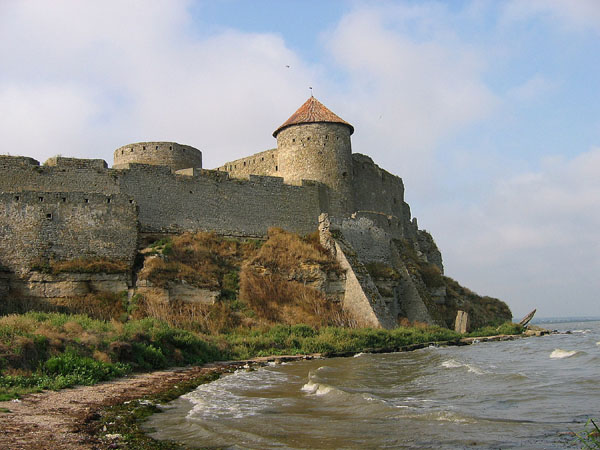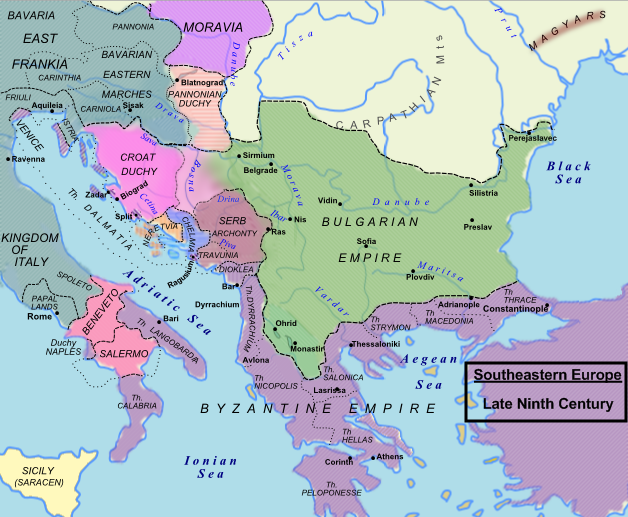|
Akkerman Convention
The Akkerman Convention was a treaty signed on October 7, 1826, between the Russian and the Ottoman Empires in the Budjak citadel of ''Akkerman'' (present-day Bilhorod-Dnistrovskyi, Ukraine). It imposed that the ''hospodars'' of Moldavia and Wallachia be elected by their respective Divans for seven-year terms, with the approval of both Powers. It also provided for the retreat of Ottoman forces from both Danubian Principalities after their prolonged stay following military actions in 1821 (that were carried in response to the Filiki Etaireía in the Greek War of Independence), and Tudor Vladimirescu's uprising. The Ottomans also agreed to cede to Wallachia the control over the Danube ports of Giurgiu, Brăila and Turnu. The convention also tackled the Serbian question: in article 5, autonomy for the Principality of Serbia was given, and the return of lands removed in 1813. Serbs were also granted freedom of movement through the Ottoman Empire. Sultan Mahmud II's repudiation o ... [...More Info...] [...Related Items...] OR: [Wikipedia] [Google] [Baidu] |
Bilhorod Dnistrovskyi
Bilhorod-Dnistrovskyi ( uk, Бі́лгород-Дністро́вський, Bílhorod-Dnistróvskyy, ; ro, Cetatea Albă), historically known as Akkerman ( tr, Akkerman) or under different names, is a city, municipality and port situated on the right bank of the Dniester Liman (on the Dniester estuary leading to the Black Sea) in Odesa Oblast of southwestern Ukraine, in the historical region of Budjak. It also serves as the administrative center of Bilhorod-Dnistrovskyi Raion, one of seven districts of Odesa Oblast, and is the only locality which constitutes Bilhorod-Dnistrovskyi urban hromada, one of the hromadas of Ukraine. It is a location of a big freight seaport. Population: Nomenclature The city of Bilhorod-Dnistrovskyi is also referred to by alternative transliterations from Ukrainian as Bilhorod-Dnistrovsky or Bilhorod-Dnistrovskyy. ''Dnistrovsky'' was added to differentiate it from Bilhorod that was part of the Sloboda Ukraine and carried a similar name. ;Pr ... [...More Info...] [...Related Items...] OR: [Wikipedia] [Google] [Baidu] |
Giurgiu
Giurgiu (; bg, Гюргево) is a city in southern Romania. The seat of Giurgiu County, it lies in the historical region of Muntenia. It is situated amongst mud-flats and marshes on the left bank of the Danube facing the Bulgarian city of Ruse on the opposite bank. Three small islands face the city, and a larger one shelters its port, Smarda. The rich grain-growing land to the north is traversed by a railway to Bucharest, the first line opened in Romania, which was built in 1869 and afterwards extended to Smarda. Giurgiu exports timber, grain, salt and petroleum, and imports coal, iron, and textiles. The Giurgiu-Ruse Friendship Bridge, in the shared Bulgarian-Romanian section of the Danube, crosses the river in the outskirts of the city. History The area around Giurgiu was densely populated at the time of the Dacians (1st century BC) as archeological evidence shows, and Burebista's capital was in this area (it is thought to be in Popeşti on the Argeş River). Dur ... [...More Info...] [...Related Items...] OR: [Wikipedia] [Google] [Baidu] |
History Of Wallachia (1821–1859)
Wallachia or Walachia (; ro, Țara Românească, lit=The Romanian Land' or 'The Romanian Country, ; archaic: ', Romanian Cyrillic alphabet: ) is a historical and geographical region of Romania. It is situated north of the Lower Danube and south of the Southern Carpathians. Wallachia is traditionally divided into two sections, Muntenia (Greater Wallachia) and Oltenia (Lesser Wallachia). Dobruja could sometimes be considered a third section due to its proximity and brief rule over it. Wallachia as a whole is sometimes referred to as Muntenia through identification with the larger of the two traditional sections. Wallachia was founded as a principality in the early 14th century by Basarab I after a rebellion against Charles I of Hungary, although the first mention of the territory of Wallachia west of the river Olt dates to a charter given to the voivode Seneslau in 1246 by Béla IV of Hungary. In 1417, Wallachia was forced to accept the suzerainty of the Ottoman Empire; this ... [...More Info...] [...Related Items...] OR: [Wikipedia] [Google] [Baidu] |
History Of Moldavia (1822–1859)
Moldavia ( ro, Moldova, or , literally "The Country of Moldavia"; in Romanian Cyrillic: or ; chu, Землѧ Молдавскаѧ; el, Ἡγεμονία τῆς Μολδαβίας) is a historical region and former principality in Central and Eastern Europe, corresponding to the territory between the Eastern Carpathians and the Dniester River. An initially independent and later autonomous state, it existed from the 14th century to 1859, when it united with Wallachia () as the basis of the modern Romanian state; at various times, Moldavia included the regions of Bessarabia (with the Budjak), all of Bukovina and Hertsa. The region of Pokuttya was also part of it for a period of time. The western half of Moldavia is now part of Romania, the eastern side belongs to the Republic of Moldova, and the northern and southeastern parts are territories of Ukraine. Name and etymology The original and short-lived reference to the region was ''Bogdania'', after Bogdan I, the ... [...More Info...] [...Related Items...] OR: [Wikipedia] [Google] [Baidu] |
Legal History Of Serbia
The Law of Serbia comprises many levels of codified and uncodified forms of law, of which the most important is the Serbian Constitution. Sources The Official Gazette of the Republic of Serbia () is the government gazette containing the laws, regulations and other documents. It is published by the public company ''Official Gazette'' (). History Early Middle age From the 8th to the 13th century, social relations were regulated by common law. The first elements and texts of middle age Serbian law were made in the 12th century. In the 14th and 15th centuries there were many new legal documents that coincided with the political and economic rise of Serbia. The influence of the Nemanjić family was enormous. During their regency, Serbia gained independence and started to develop its first legal system.Serbia Privatization Handbook: Laws, Regulations, Procedures, Ibpus.com, USA International Business, Int'l Business Publications, 07.02.2007 Zakonopravilo During the Nemanjić ... [...More Info...] [...Related Items...] OR: [Wikipedia] [Google] [Baidu] |
Legal History Of Romania
Law is a set of rules that are created and are enforceable by social or governmental institutions to regulate behavior,Robertson, ''Crimes against humanity'', 90. with its precise definition a matter of longstanding debate. It has been variously described as a science and as the art of justice. State-enforced laws can be made by a group legislature or by a single legislator, resulting in statutes; by the executive through decrees and regulations; or established by judges through precedent, usually in common law jurisdictions. Private individuals may create legally binding contracts, including arbitration agreements that adopt alternative ways of resolving disputes to standard court litigation. The creation of laws themselves may be influenced by a constitution, written or tacit, and the rights encoded therein. The law shapes politics, economics, history and society in various ways and serves as a mediator of relations between people. Legal systems vary between jurisdictions ... [...More Info...] [...Related Items...] OR: [Wikipedia] [Google] [Baidu] |
Ottoman Empire–Russia Treaties
Ottoman is the Turkish spelling of the Arabic masculine given name Uthman ( ar, عُثْمان, ‘uthmān). It may refer to: Governments and dynasties * Ottoman Caliphate, an Islamic caliphate from 1517 to 1924 * Ottoman Empire, in existence from 1299 to 1922 ** Ottoman dynasty, ruling family of the Ottoman Empire *** Osmanoğlu family, modern members of the family * Ottoman architecture Ethnicities and languages * Ottoman Armenians, the Armenian ethnic group in the Ottoman Empire * Ottoman Greeks, the Greek ethnic group in the Ottoman Empire * Ottoman Serbs, the Serbian ethnic group in the Ottoman Empire * Ottoman Turks, the Turkic ethnic group in the Ottoman Empire ** Ottoman Turkish alphabet ** Ottoman Turkish language, the variety of the Turkish language that was used in the Ottoman Empire Products * Ottoman bed, a type of storage bed * Ottoman (furniture), padded stool or footstool * Ottoman (textile), fabric with a pronounced ribbed or corded effect, often made of silk or ... [...More Info...] [...Related Items...] OR: [Wikipedia] [Google] [Baidu] |
List Of Treaties
This list of treaties contains known agreements, pacts, peaces, and major contracts between states, armies, governments, and tribal groups. Before 1200 CE 1200–1299 1300–1399 1400–1499 1500–1599 1600–1699 1700–1799 1800–1899 1900–1999 2000-Present Pending * Central American Free Trade Agreement * Free Trade Area of the Americas * Substantive Patent Law Treaty The Substantive Patent Law Treaty (SPLT) is a proposed international patent law treaty aimed at harmonizing substantive points of patent law. In contrast with the Patent Law Treaty (PLT), signed in 2000 and now in force, which only relates to forma ... (SPLT) * WIPO Protection of Broadcasting Organizations * Anti-Counterfeiting Trade Agreement Notes References External links Treaty of Peace with Japan Signed at San Francisco on 8 September 1951Treaty of Peace Between Japan and India (1952) Treaty of Peace Between Japan and the Union of Burma (1954) Agreement Between Japan a ... [...More Info...] [...Related Items...] OR: [Wikipedia] [Google] [Baidu] |
Russo-Turkish War (1828–1829)
The Russo-Turkish War of 1828–1829 was sparked by the Greek War of Independence of 1821–1829. War broke out after the Ottoman Sultan Mahmud II closed the Dardanelles to Russian ships and revoked the 1826 Akkerman Convention in retaliation for Russian participation in October 1827 in the Battle of Navarino. The Balkan front At the start of hostilities the Russian army of 100,000 men was commanded by Emperor Nicholas I, while the Ottoman forces were commanded by Agha Hussein Pasha. In April and May 1828 the Russian commander-in-chief, Prince Peter Wittgenstein, moved into Romanian Principates Wallachia and Moldavia. In June 1828, the main Russian forces under the emperor crossed the Danube and advanced into Dobruja. The Russians then laid prolonged sieges to three key Ottoman citadels in modern Bulgaria: Shumen, Varna, and Silistra. With the support of the Black Sea Fleet under Aleksey Greig, Varna was captured on 29 September. The siege of Shumen proved much mor ... [...More Info...] [...Related Items...] OR: [Wikipedia] [Google] [Baidu] |
Mahmud II
Mahmud II ( ota, محمود ثانى, Maḥmûd-u s̠ânî, tr, II. Mahmud; 20 July 1785 – 1 July 1839) was the 30th Sultan of the Ottoman Empire from 1808 until his death in 1839. His reign is recognized for the extensive administrative, military, and fiscal reforms he instituted, which culminated in the Decree of Tanzimat ("reorganization") that was carried out by his sons Abdulmejid I and Abdülaziz. Often described as "Peter the Great of Turkey", Mahmud's reforms included the 1826 abolition of the conservative Janissary corps, which removed a major obstacle to his and his successors' reforms in the Empire. The reforms he instituted were characterized by political and social changes, which would eventually lead to the birth of the modern Turkish Republic. Notwithstanding his domestic reforms, Mahmud's reign was also marked by nationalist uprisings in Ottoman-ruled Serbia and Greece, leading to a loss of territory for the Empire following the emergence of an indepen ... [...More Info...] [...Related Items...] OR: [Wikipedia] [Google] [Baidu] |
Principality Of Serbia
The Principality of Serbia ( sr-Cyrl, Књажество Србија, Knjažestvo Srbija) was an autonomous state in the Balkans that came into existence as a result of the Serbian Revolution, which lasted between 1804 and 1817. Its creation was negotiated first through an unwritten agreement between Miloš Obrenović, leader of the Second Serbian Uprising, and Ottoman official Marashli Pasha. It was followed by the series of legal documents published by the Sublime Porte in 1828, 1829 and finally, 1830—the Hatt-i Sharif. Its ''de facto'' independence ensued in 1867, following the evacuation of the remaining Ottoman troops from the Belgrade Fortress and the country; its independence was recognized internationally in 1878 by the Treaty of Berlin. In 1882 the country was elevated to the status of kingdom. Background and establishment The Serbian revolutionary leaders—first Karađorđe and then Miloš Obrenović—succeeded in their goal of liberating Serbia from centuri ... [...More Info...] [...Related Items...] OR: [Wikipedia] [Google] [Baidu] |




